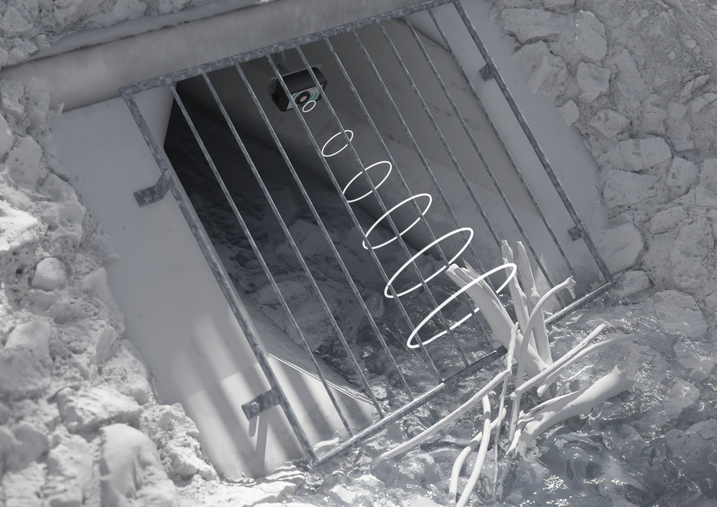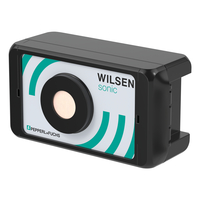Reliable Remote Monitoring of Drain Grates
Autonomous IoT Sensor Transmits Measurement Data for Efficient Resource Planning

The Application
In open drain channels, grates or screens are installed at critical points to hold back foliage and other debris. For example, they are intended to prevent debris from entering the underground sewage system from a storm sewer. Similar requirements apply to retention basins or hydropower plants, where foliage and branches are kept away from barriers or turbines. Accumulated debris must then be removed from the grates before it clogs the inflow and causes flooding. The affected areas are often widely distributed and have to be checked manually by personnel once a week or after each instance of heavy rainfall.
The Goal
Any blockage of the channels that results in backwater must be reliably prevented. Critical points should be automatically monitored. Necessary cleaning operations should take place in time, but only when actually needed. The technology used must withstand harsh weather conditions, must not require wired power and network connections, and should function for at least three years without needing to change the battery.
The Solution


The public utility company Stadtwerke Gießen, Germany, uses the WILSEN.sonic battery-operated, wireless IoT ultrasonic sensor with LoRaWAN interface to monitor various grates and screens on storm sewer systems. The sensor is aligned with the grate at a distance of 1–2 meters. In the normal state, the sensor measures through the bars of the grate. If foliage, broken trees, and other debris get stuck in the grate, this is detected by the WILSEN.sonic due to a change in the measured distance value. Based on this information, Stadtwerke Gießen can carry out the cleaning of the affected grates in a targeted manner. For this purpose, a dashboard interface is used that clearly displays the condition of the grates. In addition, an alert can be set via smartphone. The increased efficiency in the use of personnel and materials allows for considerable savings.
Technical Features
- Rugged, high-resolution ultrasound detection (mm)
- High transmitter-radiated power (+ 8 dBm)
- Sensing range: up to 7,000 mm
- Replaceable high-powered battery (3.6 V, 13,000 mAh)
- LoRaWAN interface
- Compact design (182 × 81 × 71 mm)
- Temperature range: –25 °C to +70 °C
- Secure mounting
- Degree of protection: IP67
The Benefits
Rugged ultrasonic technology allows the WILSEN.sonic to reliably detect the distance value under adverse conditions, regardless of the debris material. The measurement data is transmitted using LoRaWAN with a high transmitter-radiated power. A high-powered battery provides a maintenance-free operating time of up to ten years. The battery is easy to replace when required.
The sensor’s compact housing is robust and designed for outdoor use in rain, frost, snow, mist, and cold conditions. Integration and mounting is quick and easy. If necessary, the sonic lobe width can be adjusted, which allows installation in confined spaces. The sensor can be easily parameterized and registered in the LoRaWAN wireless network using the WILSEN app (Android and iOS) and via Bluetooth. A downlink channel enables efficient parameterization via remote access.
At a Glance
- Autonomous sensor for use in remote locations without power supply or wired data connection
- Reliable monitoring of drain grates and screens for debris
- Automatic transmission of current measured value and exceeded limit values via LoRaWAN
- Detection insensitive to mist, splashing water, dirt, and other external influences
- Compact and rugged design for long-term outdoor use








 +27 87985 0797
+27 87985 0797